bay Safety
Weymouth is renowned for its safe bathing waters and every endeavor is made to accommodate all of the various watersport activities in a safe harmonious way. We work closely with marine orgnisations such as:
- RNLI Beach Rescue
- Maritime and Coastguard Agency (MCA)
- Dorset Marine Police
- National Coastwatch Institution
Be Safe
For your safety and the safety of all users of Weymouth Bay, please read the information held within this section regarding going afloat, permit schemes and zoned areas in the bay. Some key safety tips especially for children can be found in CoastWise's fun video.
Whatever your activity, please prepare for it, carry all the right equipment necessary and be aware of the weather, local tides (tide tables below), currents and danger areas.
2025 Portland Tide Tables © Crown Copyright and/or database rights. Reproduced by permission of the Controller of Her Majesty’s Stationery Office and the UK Hydrographic Office (www.GOV.uk/UKHO).
Weymouth Bay Zoning Buoys
Please make yourself familiar with the Weymouth Bay zone buoyage layout and necessary information Weymouth Bay Chart and Weymouth Bay Water Sports Safety Information Leaflet.
- All power driven vessels should keep seaward of the white buoys across Weymouth Bay.
- The anchoring of any vessel is not permitted within the white buoys except within the established anchoring area at Overcombe (far NE end of Weymouth beach) which is marked by blue buoys, shown on the map. Propellers and anchors could seriously injure bathers, therefore, common sense and good seamanship dictate that navigation and mooring in bathing areas should always be avoided.
- The water-ski channel marked by red and white buoys is only for water-ski craft to gain access to the beach. Once passengers and water skiers have been collected from the beach all water-ski activities should take place to seaward of the white buoys.
- Harbour byelaws require water-ski boats to have at least two people in the boat whilst engaged in skiing, thus allowing one person to act as look out astern.
- The PWC channel (marked by red buoys) must only be used to gain access to the beach. After launching all PWC activities should take place to seaward of the white buoys.
Please refer to the following NTM's for more information:
RNLI Advice Onboard
The RNLI offers a free, friendly and confidential service that looks at the safety aspects of your boat. Conducted by a highly trained volunteer, Advice Onboard is a personal, face-to-face safety advice service that takes place onboard your craft. Visits are tailored to your vessel and the type of boating you do. For more information or to book a session call +44 (0) 845 045 6999 or visit the Advice Onboard section of their website.
Liferings
Liferings are positioned at various locations around the harbour; please contact the harbour office if you see any housing units that are damaged or missing a lifering.
Reporting Damage or Incidents
Incidents involving damage or injury in the harbour should be reported to the Harbour Office as soon as possible via telephone or via the online forms.
You may be asked to complete a Marine Accident Investigation Branch Form. Accident Report Forms are also available at the Harbour Office.









